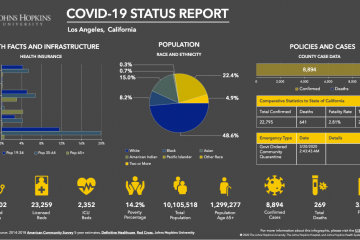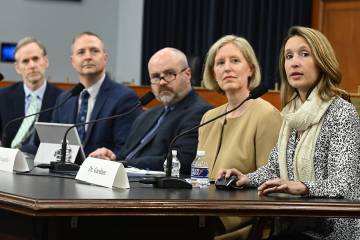- Name
- Doug Donovan
- dougdonovan@jhu.edu
- Office phone
- 443-997-9909
- Cell phone
- 443-462-2947
The Johns Hopkins University professor behind the popular COVID-19 global tracking map is joining scientists at two other institutions to develop new methods for understanding how and why the current coronavirus and future pandemics spread.
The team plans to construct massive databases of international airline traffic, worldwide weather patterns, national demographics, and genomic information from infected patients and use them to develop statistical models that could reveal patterns explaining COVID-19's rapid spread.
Building online visualizations could better inform the public and national leaders about how complex systems around the world interact to fuel outbreaks of infectious diseases. The team hopes that national governments could use the tools to improve their responses to COVID-19 and minimize future outbreaks.
"The overarching objective of this project is to improve our general understanding of how infectious diseases spread, and why they impact populations differently," said Lauren Gardner, the Johns Hopkins civil and systems engineering professor who developed the world famous COVID-19 tracking map. "We will develop new methodologies to explain COVID-19 transmission and spreading risk, accounting for various factors including genomics, mobility, climate, land use, population demographics, and epidemiological data."
The project has won a $1.3 million grant from the National Institutes of Health and will be led by Kristian Andersen, an immunology and microbiology professor at Scripps Research. A third collaborator, Marc Suchard, is a professor of biostatistics and human genetics at UCLA.
"The problem is that existing tools for analyzing infectious diseases can't see how all of these factors are interconnected," Andersen said.
Added Suchard: "Not only will this allow us to understand whether certain public health measures are working, but it also will help predict how the disease could spread under different circumstances."
The team intends to tap and map genomic data from virus genomes sequenced from COVID-19 patients that are collected and shared openly on research databases. Andersen and others will use that data to look for mutations, or slight changes in genetic sequence, that show how the virus moved from person to person.
Posted in Science+Technology
Tagged civil engineering, coronavirus, covid-19, lauren gardner









